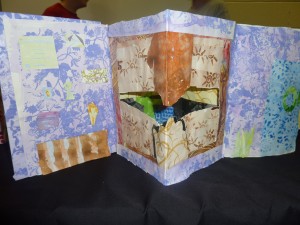My hero is my dad. His full name is Shu Shiuh-Shieu Lin. He was born on May 7th, 1966 to Amy and Young Tso (pronounced “so”) Lin in Kaosiung (pronounce “kao-shung”), Taiwan. He has two older sisters, Janet and Kay. He lived in Taiwan until seventh grade. For seventh grade he moved to California with his family. After he graduated from high school, he went on to be a Cardiovascular and Thoracic (heart and lung) surgeon. He also became a professor of Immunology (branch of medicine and biology concerned with immunity) and Pathology (the science or the study of the origin, nature, and course of diseases). He currently lives in Durham, NC as a surgeon and professor at Duke Hospital. He has two daughters, Sydney (12) and Samantha (7), and one son/ dog, Gomez (2).
As a child, my dad did not like to study and he was very athletic. He was always playing baseball or hanging out with his friends. His best friend in 5th and 6th grade was Vincient Wang, the leader and founder of their group who was a couple years older than my dad. They called their group fēng gǒu, or crazy dog group in English. His greatest achievement in grade school was in 5th grade when he won an essay writing contest. One of the most disappointing times was when he didn’t get picked for the competitive dodge ball team. My dad and his sisters fought, but not much. When they did, it was usually over food. Once his oldest sister, Janet, sat on my dad’s model airplane that he made.
My dad is my hero because he is so kind. My dad really likes to play basketball and has friends that he often plays with. When he goes, I go with him to watch. During breaks, he teaches me how to dribble and shoot baskets. We always play until his teammates call him back. After basketball, he always asks, “Do you want to go get some ice cream?” Of course I say yes every time! Another way my dad shows kindness is in the way he participates and supports me in all of my activities. On Sundays, I participated in Mr. Block’s weekend basketball camp. My dad would come with me and always be one of the parents who helped out. The fact that he was so helpful by being there, always boosted my confidence since I knew he had (and still has) a busy schedule.
My dad is a hero because he is so helpful in so many ways. Not only does he save and lengthen people’s lives as a doctor, but he also provides for our family. My mom is a nurse at Duke hospital. She once told the story of a man that had just had surgery. He was starting to wake up when my dad, his surgeon, came by to check on him. The man reached up, grabbed my dad’s face and said, “I love you man,” then fell back to sleep. Later when I interviewed my dad he said, “I was just happy he spoke. And that he didn’t have a stroke. I understood his appreciation. People show their appreciation differently.” In my opinion, that man was lucky to have such a trustworthy surgeon.
To do surgery you need a steady hand and lots of focus. Not only that, but you need to be trustworthy. Your patient needs to be able to trust you. My dad’s patients all trust him to do surgery on them. Another thing you need to be to be a good surgeon is intelligence.
My dad did not like to study, but he was lucky that he was very good at it anyway. He said, “I was lucky. Also I was very persistent. Don’t be afraid to have to work hard. There is no free lunch, you need to work hard.” After finishing high school, he got into Harvard University. He graduated from Harvard University in 1988. After Harvard, he went to medical school, internship, fellowship, and residency at Duke University.
My dad has influenced my life by teaching me how to play basketball and chess. Also he has inspired me to keep doing what I like to do by showing determination. I’m lucky to have him as my dad, because he really is a true hero.


